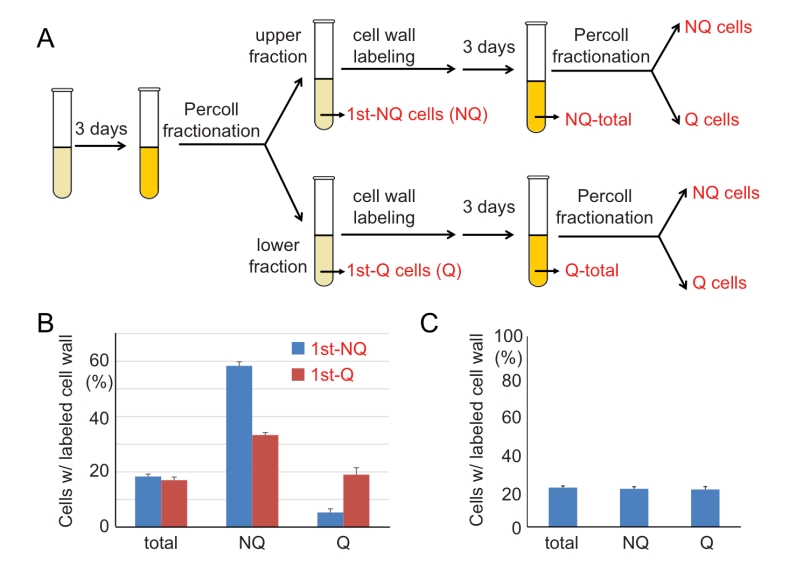FIGURE 7: The cell fate of NQ cells is mostly irreversible. (A) A schematic diagram of the regrowth experiment. Q and NQ cells from 3-day stationary phase cultures were labeled with NHS-Rhodamine and then allowed to separately regrow for another 3 days. The regrown cultures were fractionated again and the cells were analyzed. (B) Most NQ cells from the first fractionation are distributed to the NQ (upper) fractions even after regrowth. The mean percentages of cells with Rhodamine-stained cell walls in total stationary phase cultures (total) and the gradient-isolated fractions (NQ and Q) are shown. (C) Rhodamine staining does not influence cell fate determination. Cells from stationary phase cultures were stained with NHS-Rhodamine and then mixed with unstained cells from the same culture. The mixed cell cultures were fractionated and the percentages of Rhodamine-stained cells in different fractions were analyzed. In all regrowth experiments, at least 3 repeat experiments were performed and at least 100 cells were counted in each repeat. Error bars represent the standard error.
By continuing to use the site, you agree to the use of cookies. more information
The cookie settings on this website are set to "allow cookies" to give you the best browsing experience possible. If you continue to use this website without changing your cookie settings or you click "Accept" below then you are consenting to this. Please refer to our "privacy statement" and our "terms of use" for further information.

